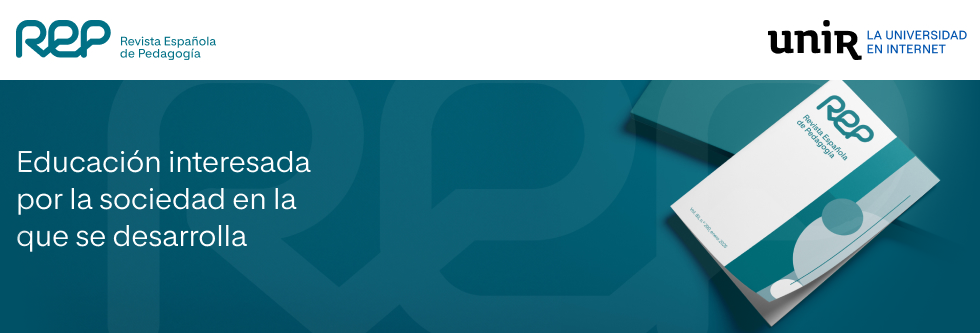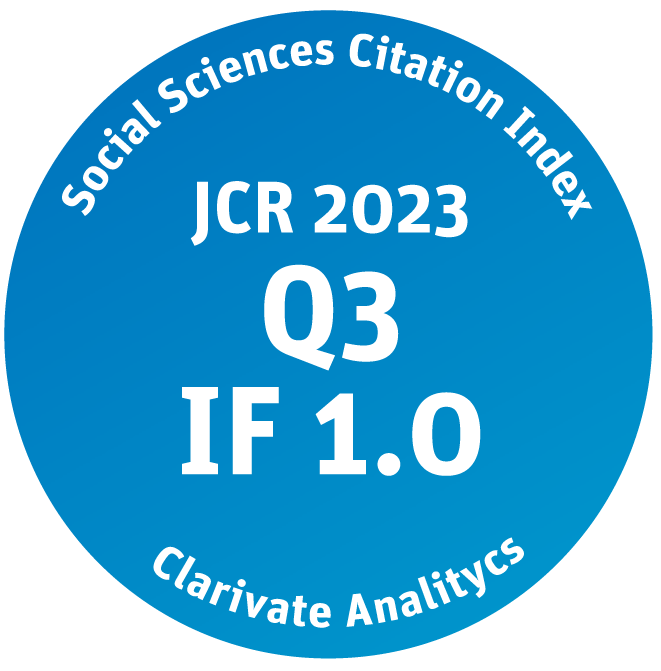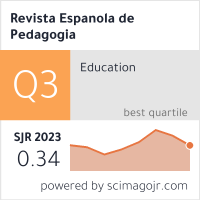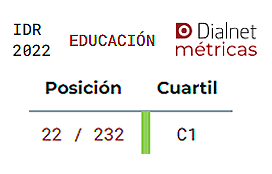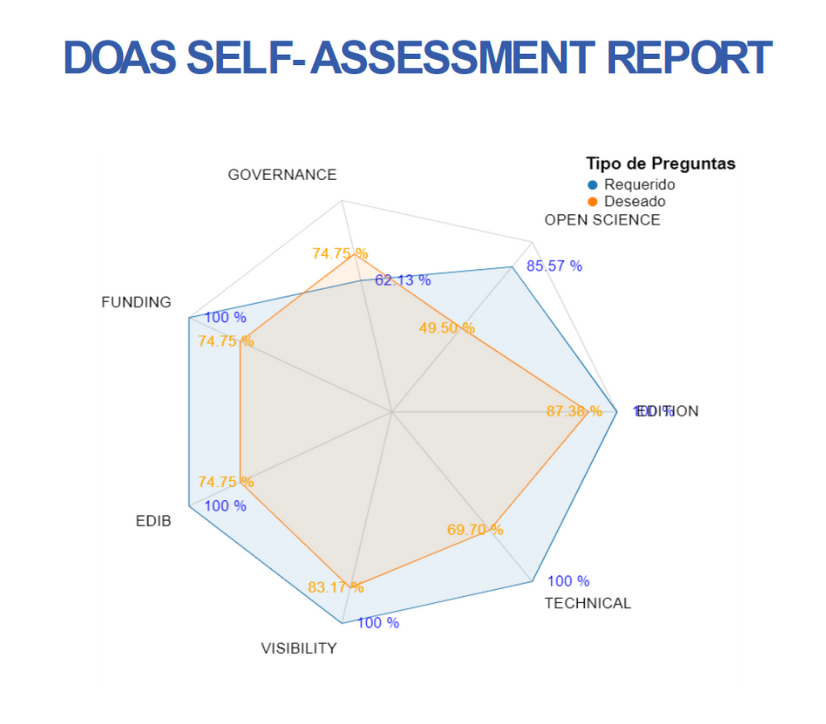Abstract
The development of motor competencies is one of the most important objectives of physical education, and therefore it is necessary to assess it from a pedagogical approach using valid instruments. The MOBAK battery is designed to assess basic motor competencies in primary education. It differentiates by the stage in the curriculum, and proposes a two-factor structure corresponding to the basic motor competencies of object movement and self-movement. This study has three objectives: to determine the construct validity of three test instruments of the MOBAK battery for assessing motor competencies; to determine how gender, BMI, and age covariates relate to motor competencies; and to examine the level of basic motor competencies of primary school children in Chile. A total of 1,785 children (45.7% girls) were assessed, divided into 1st and 2nd grade (MOBAK 1-2; 559 children; 50.6 % girls), 3rd and 4th grade (MOBAK 3-4; 496 children, 39.3 % girls), and 5th and 6th grade (MOBAK 5-6; 730 children, 46.3 % girls). The construct validity of each section was analysed using the confirmatory factorial analysis (CFA). The results confirm the two-factor structure in all sections of the MOBAK battery, they confirm the relationship between motor competencies and the covariates gender, BMI, and age, and they show that Chilean primary school children have low levels of motor competence, especially in 5th and 6th grade. The MOBAK battery is a suitable instrument for the assessment of basic motor competencies in primary education and is a diagnostic and monitoring tool for pedagogical practices and educational research.
This is the English version of an article originally printed in Spanish in issue 276 of the revista española de pedagogía. For this reason, the abbreviation EV has been added to the page numbers. Please, cite this article as follows: Carcamo- Oyarzun, J., & Herrmann, C. (2020). Validez de constructo de la batería MOBAK para la evaluación de las competencias motrices básicas en escolares de educación primaria | Construct validity of the MOBAK test battery for the assessment of basic motor competencies in primary school children. Revista Española de Pedagogía, 78 (276), 291-308. doi: 10.22550/REP78-2-2020-03
Referencias | References
Barnett, L. M., van Beurden, E., Morgan, P. J., Brooks, L. O., & Beard, J. R. (2010). Gender differences in motor skill proficiency from childhood to adolescence: A longitudinal study. Research Quarterly for Exercise and Sport, 81 (2), 162-170. doi: 10.1080/02701 367.2010.10599663
Cairney, J., Dudley, D., Kwan, M., Bulten, R., & Kriellaars, D. (2019). Physical Literacy, Physical Activity and Health: Toward an Evidence‑ Informed Conceptual Model. Sports Medicine, 49 (3), 371-383. doi: 10.1007/ s40279-019-01063-3
Carcamo-Oyarzun, J. (2019, August). Evaluación de las competencias motrices básicas. Relación con determinantes endógenas y exógenas. Paper presented at the II Congreso Internacional de Educación Física del Maule of Universidad Católica del Maule, Talca, Chile.
Clark, J. E., & Metcalfe, J. S. (2002). The mountain of motor development: A metaphor. In J. E. Clark & J. H. Humphrey (Eds.), Motor development: Research and reviews (pp. 163-190). Reston: National Association for Sport and Physical Education.
Cliff, D. P., Okely, A. D., Morgan, P. J., Jones, R. A., Steele, J. R., & Baur, L. A. (2012). Proficiency deficiency: Mastery of fundamental movement skills and skill components in overweight and obese children. Obesity, 20 (5), 1024-1033. doi: 10.1038/oby.2011.241
Estevan, I., & Barnett, L. M. (2018). Considerations Related to the Definition, Measurement and Analysis of Perceived Motor Competence. Sports Medicine, 48 (12), 2685-2694. doi: 10.1007/s40279-018-0940-2
Gerlach, E., Herrmann, C., Jekauc, D., & Wagner, M. O. (2017). Diagnostik motorischer Leistungsdispositionen. In U. Trautwein & M. Hasselhorn (Eds.), Begabungen und Talente. Jahrbuch der pädagogisch-psychologischen Diagnostik, Tests & Trends (pp. 145-158). Göttingen: Hogrefe.
Gómez-García, M., Ruiz-Pérez, L. M., & Mata-Gómez de Avila, E. (2006). Los problemas evolutivos de coordinación en la adolescencia: Análisis de una dificultad oculta. RICYDE. Revista internacional de ciencias del deporte, 2 (3), 44-54. doi: 10.5232/ricyde2006.00303
Haywood, K., & Getchell, N. (2019). Life span motor development. Champaign: Human Kinetics.
Herrmann, C. (2018). MOBAK 1-4: Test zur Erfassung motorischer Basiskompetenzen für die Klassen 1 - 4. Hogrefe: Göttingen.
Herrmann, C., Gerlach, E., & Seelig, H. (2015). Development and Validation of a Test Instrument for the Assessment of Basic Motor Competencies in Primary School. Measurement in Physical Education and Exercise Science, 19 (2), 80-90. doi: 10.1080/1091367X.2014.998821
Herrmann, C., Heim, C., & Seelig, H. (2019). Construct and correlates of basic motor competencies in primary school-aged children. Journal of Sport and Health Science, 8 (1), 63-70. doi: 10.1016/j.jshs.2017.04.002
Herrmann, C., & Seelig, H. (2017a). Basic motor competencies of fifth graders. German Journal of Exercise and Sport Research, 47 (2), 110-121. doi: 10.1007/s12662-016-0430-3
Herrmann, C., & Seelig, H. (2017b). Structure and Profiles of Basic Motor Competencies in the Third Grade-Validation of the Test Instrument MOBAK-3. Perceptual and Motor Skills, 124 (1), 5-20. doi: https://doi. org/10.1177/0031512516679060
Herrmann, C., Seelig, H., Ferrari, I., & Kühnis, J. (2019). Basic motor competencies of preschoolers: construct, assessment and determinants. German Journal of Exercise and Sport Research, 49 (2), 179-187. doi: https://doi. org/10.1007/s12662-019-00566-5
Herrmann, C., & Seelig, H. (2018). MOBAK 5-6: Competencias motrices básicas en 5° y 6° Grado: Manual de Aplicación. Retrieved from http://mobak. info/wp-content/uploads/2019/02/MOBAK_5-6_ espa%C3%B1ol.pdf (Consulted on 16-03-2020).
Herrmann, C., & Seelig, H. (2019a). MOBAK 1-2: Competencias motrices básicas en 1° y 2° grado: Manual de Aplicación. Retrieved from https://docs.wixstatic. com/ugd/be0570_9d61e2cbee5248278f5edd2dd69a5e35. pdf (Consulted on 16-03-2020).
Herrmann, C., & Seelig, H. (2019b). MOBAK 3-4: Competencias motrices básicas en 3° y 4° Grado: Manual de Aplicación. Retrieved from https:// docs.wixstatic.com/ugd/be0570_67123e505d- 8d478a9db79c8f02e4c477.pdf (Consulted on 16-03-2020).
Hu, L., & Bentler, P. M. (1999). Cut-off criteria for fit indexes in covariance structure analysis: Conventional criteria versus new alternatives. Structural Equation Modeling, 6 (1), 1-55.
Hulteen, R. M., Morgan, P. J., Barnett, L. M., Stodden, D. F., & Lubans, D. R. (2018). Development of Foundational Movement Skills: A Conceptual Model for Physical Activity Across the Lifespan. Sports Medicine, 48 (7), 1533-1540. doi: 10.1007/s40279-018-0892-6
Leonard, H. C. (2016). The Impact of Poor Motor Skills on Perceptual, Social and Cognitive Development: The Case of Developmental Coordination Disorder. Frontiers in Psychology, 7, 1-4. doi: 10.3389/fpsyg.2016.00311
Lopes, V. P., Stodden, D. F., Bianchi, M. M., Maia, J. A. R., & Rodrigues, L. P. (2012). Correlation between BMI and motor coordination in children. Journal of Science and Medicine in Sport, 15 (1), 38-43. doi: 10.1016/j.jsams.2011.07.005
Loprinzi, P. D., Cardinal, B. J., Loprinzi, K. L., & Lee, H. (2012). Benefits and environmental determinants of physical activity in children and adolescents. Obesity Facts, 5 (4), 597-610. doi: 10.1159/000342684
Ludyga, S., Mücke, M., Kamijo, K., Andrä, C., Pühse, U., Gerber, M., & Herrmann, C. (2019). The Role of Motor Competences in Predicting Working Memory Maintenance and Preparatory Processing. Child Development. doi: 10.1111/cdev.13227
Martínez López, E. J. (2007). Pruebas de Aptitud Física. Badalona: Paidotribo.
Martínez-López, E. J., Grao-Cruces, A., Moral-García, J. E., & de la Torre, M. J. (2013). Conocimiento y actitud. Dos elementos clave en la formación del maestro de Educación Física para prevenir y tratar la obesidad juvenil. revista española de pedagogía, 71 (256), 525-540.
Ministerio de Educación (2013). Bases Curriculares Educación Física y Salud de 1° a 6° Básico. Santiago de Chile: Ministerio de Educación, Gobierno de Chile.
Muthén, B. O., Du Toit, S. H. C., & Spisic, D. (1997). Robust inference using weighted least squares and quadratic estimating equations in latent variable modeling with categorical and continuous outcomes. Los Angeles: University of California.
Muthen, B. O., & Satorra, A. (1995). Complex Sample Data in Structural Equation Modeling. Sociological Methodology, 25, 267. 10.2307/271070
Muthén, L. K., & Muthén, B. O. (2012). Mplus User’s Guide: Statistical Analysis with Latent Variables (7th ed.). Los Angeles: Muthén & Muthén.
Okely, A. D., Booth, M. L., & Chey, T. (2004). Relationships between body composition and fundamental movement skills among children and adolescents. Research Quarterly for Exercise and Sport, 75 (3), 238-247. doi: https://doi.org /10.1080/02701367.2004.10609157
Quitério, A., Martins, J., Onofre, M., Costa, J., Mota Rodrigues, J., Gerlach, E., Herrmann, C. (2018). Mobak 1 Assessment in Primary Physical Education: Exploring Basic Motor Competences of Portuguese 6-Year-Olds. Perceptual and Motor Skills, 125 (6), 1055-1069. doi: 10.1177/0031512518804358 R
obinson, L. E., Stodden, D. F., Barnett, L. M., Lopes, V. P., Logan, S. W., Rodrigues, L. P., & D'Hondt, E. (2015). Motor Competence and its Effect on Positive Developmental Trajectories of Health. Sports Medicine, 45, 1273-1284. doi: 10.1007/s40279-015-0351-6
Rose, E., Larkin, D., Parker, H., & Hands, B. (2015). Does Motor Competence Affect Self-Perceptions Differently for Adolescent Males and Females? SAGE Open, 5 (4), 1-9. doi: https://doi. org/10.1177/2158244015615922
Ruiz, L. M. (1995). Competencia motriz: Elementos para comprender el aprendizaje motor en educación física escolar. Madrid: Gymnos.
Ruiz, L. M. (2014). De qué hablamos cuando hablamos de Competencia Motriz. Acción Motriz, 12, 37-47.
Ruiz, L. M., & Graupera, J. L. (2005). Un estudio transcultural de la competencia motriz en escolares de 7 a 10 años: utilidad de la Batería Movement ABC. revista española de pedagogía, 63 (231), 289-308.
Scheuer, C., Bund, A., Becker, W., & Herrmann, C. (2017). Development and validation of a survey instrument for detecting basic motor competencies in elementary school children. Cogent Education, 4 (1), 219. doi: https://doi. org/10.1080/2331186X.2017.1337544
Scheuer, C., Herrmann, C., & Bund, A. (2019). Motor tests for primary school aged children: A systematic review. Journal of Sports Sciences, 37 (10), 1097-1112. doi: 10.1080/ 02640414.2018.1544535
Schierz, M., & Thiele, J. (2013). Weiter denken-Umdenken-Neu denken? In H. Aschebrock & G. Stibbe (Eds.), Didaktische Konzepte für den Schulsport (pp. 122-147).
Aachem: Meyer & Meyer. Spessato, B. C., Gabbard, C., & Valentini, N. C. (2013). The Role of Motor Competence and Body Mass Index in Children’s Activity Levels in Physical Education Classes. Journal of Teaching in Physical Education, 32 (2), 118-130. doi: 10.1123/jtpe.32.2.118
Stodden, D. F., Goodway, J. D., Langendorfer, S. J., Roberton, M. A., Rudisill, M. E., Garcia, C., & Garcia, L. E. (2008). A Developmental Perspective on the Role of Motor Skill Competence in Physical Activity: An Emergent Relationship. Quest, 60 (2), 290-306. doi: 10.1 080/00336297.2008.10483582
Strotmeyer, A., Kehne, M., & Herrmann, C. (2019). Motorische Basiskompetenzen: Zusammenhängemit Geschlecht, Alter, Gewichtsstatus, außerschulischer Sportaktivität und Koordinationsleistung. German Journal of Exercise and Sport Research, 50, 82-91. doi: https://doi. org/10.1007/s12662-019-00596-z
UNESCO (2015). Quality Physical Education (QPE): guidelines for policy makers. Paris: UNESCO.
Van der Fels, I. M. J., Te Wierike, S. C. M., Hartman, E., Elferink-Gemser, M. T., Smith, J., & Visscher, C. (2015). The relationship between motor skills and cognitive skills in 4-16 year old typically developing children: A systematic review. Journal of Science and Medicine in Sport, 18 (6), 697-703. doi: 10.1016/j. jsams.2014.09.007
Weinert, F. E. (2001). Concept of competence: a conceptual clarification. In D. S. Rychen & L. H. Salganik (Eds.), Defining and selecting key competencies
Citación recomendada | Recommended citation
Carcamo-Oyarzun, J.,
&
Herrmann, C.
(2020)
.
Construct validity of the MOBAK test battery for the assessment of basic motor competencies in primary school children.
Revista Española de Pedagogía, 78(276).
https://www.revistadepedagogia.org/rep/vol78/iss276/11
Licencia Creative Commons | Creative Commons License
Esta obra está bajo una licencia internacional Creative Commons Atribución-NoComercial 4.0.
This work is licensed under a Creative Commons Attribution-NonCommercial 4.0 International License
Palabras clave | Keywords
factoranalysis, motorcompetencies, primaryeducation, testbatteries
